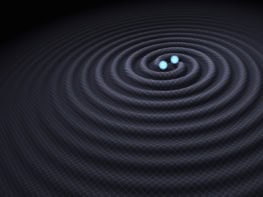By Michael Banks

All eyes will be on Stockholm next week as the 2013 Nobel Prize for Physics is announced. One of the frontrunners for the prize in the minds of the Royal Swedish Academy of Sciences will surely be the discovery last year of the Higgs boson at CERN’s Large Hadron Collider (LHC).
But the LHC story is far from over and in the latest Physics World focus issue on “big science” find out how the LHC will hunt for new particles beyond the Higgs boson once the collider restarts in 2015 following an 18-month repair and upgrade programme at the Geneva-based lab.
All full members of the Institute of Physics will receive a print edition of the focus issue along with their copy of the October issue of Physics World, but everyone can access a free digital edition. The focus issue also looks at how particle physicists are already thinking about what could come after the LHC, with bold plans for a 80–100 km proton–proton collider. There are even plans for a collider based on lasers, with an international team looking at creating an array of “fibre lasers” to be used as a future “Higgs factory”.
Yet big science is not just limited to the ground; as Jean-Jacques Dordain, director-general of the European Space Agency, explains, the agency is planning a suite of missions in the coming decade that will keep scientists busy for the years to come.
Here’s a rundown of what’s in the focus issue on big science.
• Can the ICAN do it? – An international team of researchers is looking to build a new kind of laser by combining the beams from hundreds of “fibre lasers”, as Daniel Clery finds out
• Through a crystal, darkly – Physicists are developing techniques to grow half a tonne of calcium tungstate, 1 kg at a time, for use in dark-matter experiments, as Edwin Cartlidge reports
• Upgrading the world’s biggest collider – Steve Myers, director of accelerators and technology at CERN, explains how engineers will get the LHC ready for 13 TeV collisions in 2015
• A circular vision for high-energy physics – Michael Banks looks at plans to build a new 80–100 km tunnel that would house a machine to study in the Higgs boson in great detail as well as a 100 TeV proton collider
• ESA looks to the future – Jean-Jacques Dordain, director-general of the European Space Agency, describes how it is looking to bolster the number of “big science” space probes by increasing international collaboration.
I hope you find this focus issue stimulating and please do let us have your comments by e-mailing pwld@iop.org or leaving your remarks below.



